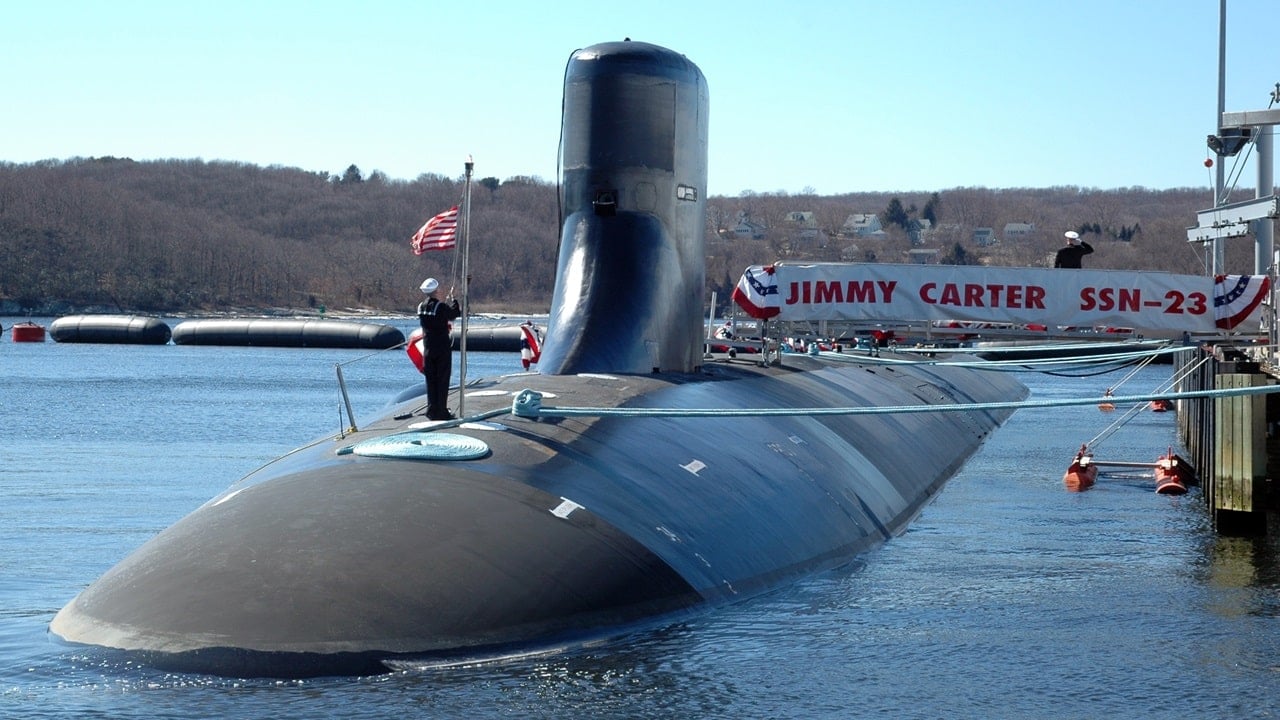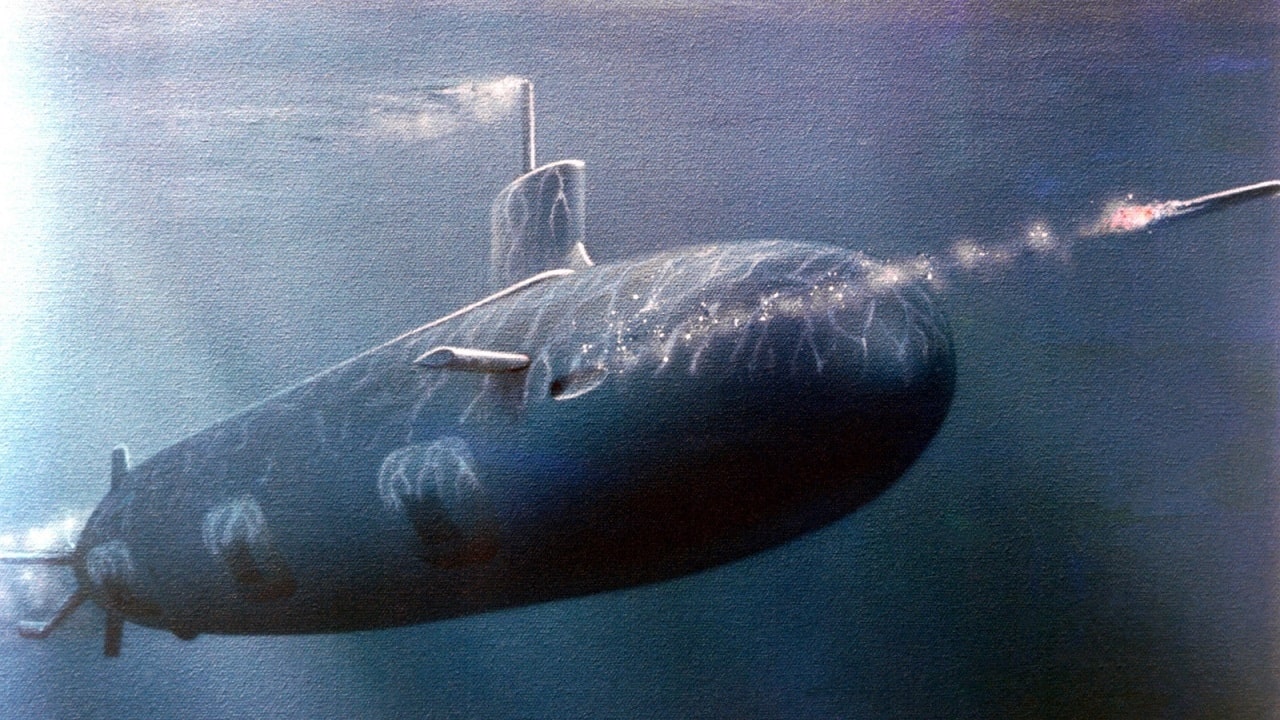Why a 'Special' Seawolf-Class Navy Submarine Collided with an Underwater Mountain
In October 2021, the U.S. Navy's nuclear-powered submarine USS Connecticut collided with an uncharted seamount in the South China Sea, resulting in injuries to 11 crew members. The Seawolf-class fast attack submarine was operating at high speed in poorly charted waters when the accident occurred.
What You Need to Know: In October 2021, the U.S. Navy's nuclear-powered submarine USS Connecticut collided with an uncharted seamount in the South China Sea, resulting in injuries to 11 crew members. The Seawolf-class fast attack submarine was operating at high speed in poorly charted waters when the accident occurred.

-An investigation revealed that navigational errors, inadequate watch team execution, and poor risk management were primary factors in the mishap.
-The commanding officer and two senior crew members were relieved of duty following the incident. The collision underscores the challenges submarines face when navigating areas with numerous uncharted underwater obstacles, highlighting the need for meticulous planning and situational awareness.
Submarine vs. Underwater Mountain: Inside the USS Connecticut Incident
Three years ago this month, a U.S. Navy nuclear-powered submarine collided with an "uncharted seamount" – also known as an underwater mountain. The Seawolf-class fast attack submarine USS Connecticut (SSN-22) hit a then-unidentified object in international waters in the South China Sea, resulting in moderate to minor injuries to 11 crewmembers.
At the time of the incident, SSN-22 was five months into a "surge deployment" and was reportedly traveling at a high speed in waters that USNI News described as "poorly charted."
Following an investigation, the boat's commanding officer Commander Cameron Aljilani, executive officer Lt. Commander Patrick Cashin, and the chief of the boat Master Chief Sonar Technician Cory Rodgers were all relieved of duty.
"No single action or inaction caused this mishap, but it was preventable. It resulted from an accumulation of errors and omissions in navigation planning, watch team execution, and risk management," wrote the U.S. Pacific Fleet's Maritime Headquarters Rear Admiral Christopher Cavanaugh, who oversaw the command investigation.
"Prudent decision-making and adherence to standards in any one of these three areas could have prevented the grounding," Cavanaugh added.
Yes, A Submarine Hit a Mountain
No doubt to some the idea that a submarine could hit a mountain might seem like a joke or would be a headline one would expect on April 1. Yet, such collisions are entirely uncommon and likely even impossible to completely avoid as researchers believe there are more than 100,000 seamounts that rise more than 1,000 meters (about 3,300 feet) from the seafloor according to the National Oceanic and Atmospheric Administration (NOAA).
"New estimates suggest that, taken together, seamounts encompass about 28.8 million square kilometers of the Earth's surface," NOAA explained. "That's larger than deserts, tundra, or any other single land-based global habitat on the planet."
The vast majority of seamounts are the remnants of extinct volcanoes, and as expected most are "cone shaped," Ocean Exploration explained, but added, some seamounts "have other prominent features such as craters and linear ridges and some, called guyots, have large, flat summits."
Most importantly, less than one-tenth of one percent of the world's seamounts have been explored with any significant detail. Seamounts are also found in every world ocean basin. That makes navigating a submarine while attempting to remain undetected, extremely difficult.

Such was the case with the USS Connecticut suggested experts, as the boat was operating in largely unfamiliar waters while avoiding Chinese warships in the process.
"You don't have any windows, you can't see outside," Bryan Clark, who spent 25 years as a U.S. submariner, told Navy Times in November 2021. "You're driving around in the dark without having a really good picture of what's going on in front of you."
The boat likely was relying on its "passive" sonar, which allows the crew to "listen for ships, marine life or other obstacles," but Clark noted that would mean giving up some of its "environmental awareness." As passive sonar relies on obstacles making noise, it wouldn't alert the crew to the presence of a seamount.
The crew may have failed to take the necessary precautions.
"At least one sailor detected sonar readings that were not matching the navigational chart of the undersea area. However, the officer of the deck did not report the hazard to the Connecticut’s commanding officer, who was not standing duty at the time," Stars and Stripes reported.
Could the Accident Been Somehow Avoided?
Could the accident have been avoided? Likely, but it might have required using more than the passive sonar and that may not have been an option.
"You don't want to reveal your location unless you have to," Clark added. "It gives you a very constrained area to operate in."
The location of the October 2021 incident also was a factor.
The South China Sea is noted for being poorly surveyed and has a few passable sea lanes. Its waters aren't also particularly deep, further limiting the options where submarines can safely operate. The U.S. Navy likely lacks the detailed charts for the South China Sea, presenting another problem for the service should Washington and Beijing come to blows!
Author Experience and Expertise: Peter Suciu
Peter Suciu is a Michigan-based writer. He has contributed to more than four dozen magazines, newspapers, and websites with over 3,200 published pieces over a twenty-year career in journalism. He regularly writes about military hardware, firearms history, cybersecurity, politics, and international affairs. Peter is also a Contributing Writer for Forbes and Clearance Jobs. You can follow him on Twitter: @PeterSuciu. You can email the author: [email protected].
Image Credit: Creative Commons and/or Shutterstock.


